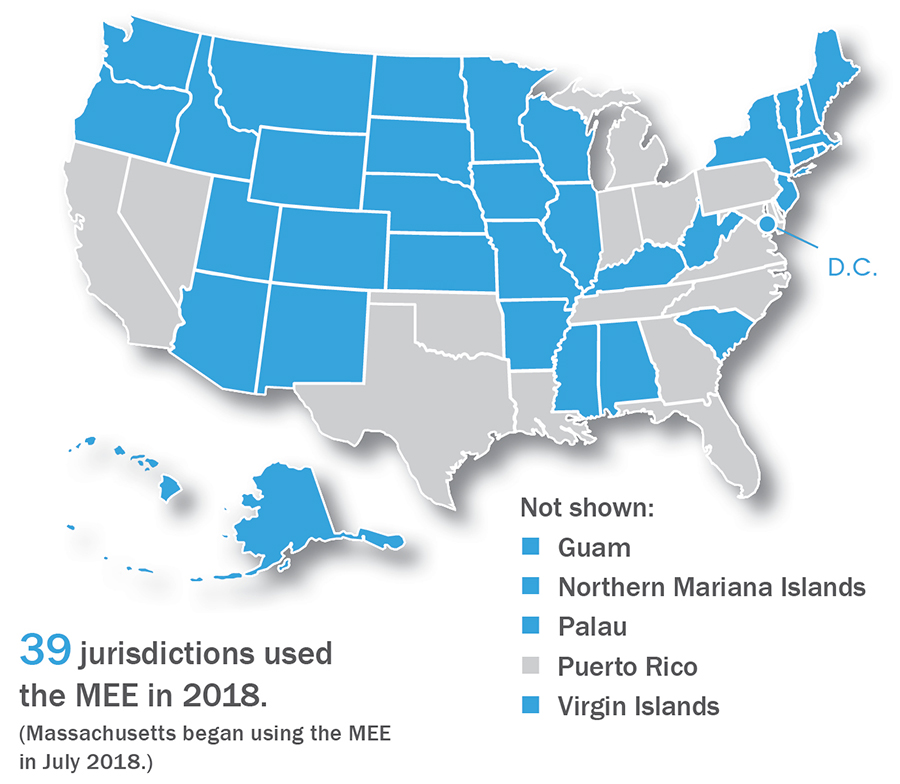The Multistate Essay Examination (MEE)
The National Conference of Bar Examiners has produced the Multistate Essay Examination (MEE) since 1988.
The MEE consists of six 30-minute questions per administration.
The purpose of the MEE is to test the examinee’s ability to (1) identify legal issues raised by a hypothetical factual situation; (2) separate material which is relevant from that which is not; (3) present a reasoned analysis of the relevant issues in a clear, concise, and well-organized composition; and (4) demonstrate an understanding of the fundamental legal principles relevant to the probable solution of the issues raised by the factual situation. The primary distinction between the MEE and the Multistate Bar Examination (MBE) is that the MEE requires the examinee to demonstrate an ability to communicate effectively in writing.
Areas of law that may be covered on the MEE include the following: Business Associations (Agency and Partnership; Corporations and Limited Liability Companies), Civil Procedure, Conflict of Laws, Constitutional Law, Contracts, Criminal Law and Procedure, Evidence, Family Law, Real Property, Secured Transactions (UCC Article 9), Torts, and Trusts and Estates (Decedents’ Estates; Trusts and Future Interests). Some questions may include issues in more than one area of law. The particular areas covered vary from exam to exam. Each jurisdiction determines its own policy with regard to the relative weight given to the MEE and other scores. (Jurisdictions that administer the Uniform Bar Examination [UBE] weight the MEE component 30%.)
Jurisdictions Using the MEE in 2018

NOTE: North Carolina and Tennessee began using the MEE in February 2019. The following jurisdictions will begin using the MEE in future administrations: Maryland (July 2019), Ohio (July 2020), and Texas (February 2021).






